Civil War Witness Trees
Civil War Witness Trees examines the sites of Civil War battlefields by making portraits of the last living witnesses of the American Civil War, 150 years after the start of the conflict. Using historical documents, period photographs, and historic preservation resources, I visit, contemplate, and photograph these trees in their environments.
These trees are fascinating to me – they were present as tens of thousands of Americans were killed in action, they stood silently next to Abraham Lincoln as he delivered the Gettysburg Address, and they inspired Walt Whitman to write about the amputated limbs heaped beneath their branches. They are as old as the photographic technology that I now use to record them, and function as a historical marker in a similar manner. My act of making contemporary color photographs marks the significance of these trees, recognizing the otherwise overlooked historical importance, and maps the past forward into the present.
These trees are fascinating to me – they were present as tens of thousands of Americans were killed in action, they stood silently next to Abraham Lincoln as he delivered the Gettysburg Address, and they inspired Walt Whitman to write about the amputated limbs heaped beneath their branches. They are as old as the photographic technology that I now use to record them, and function as a historical marker in a similar manner. My act of making contemporary color photographs marks the significance of these trees, recognizing the otherwise overlooked historical importance, and maps the past forward into the present.
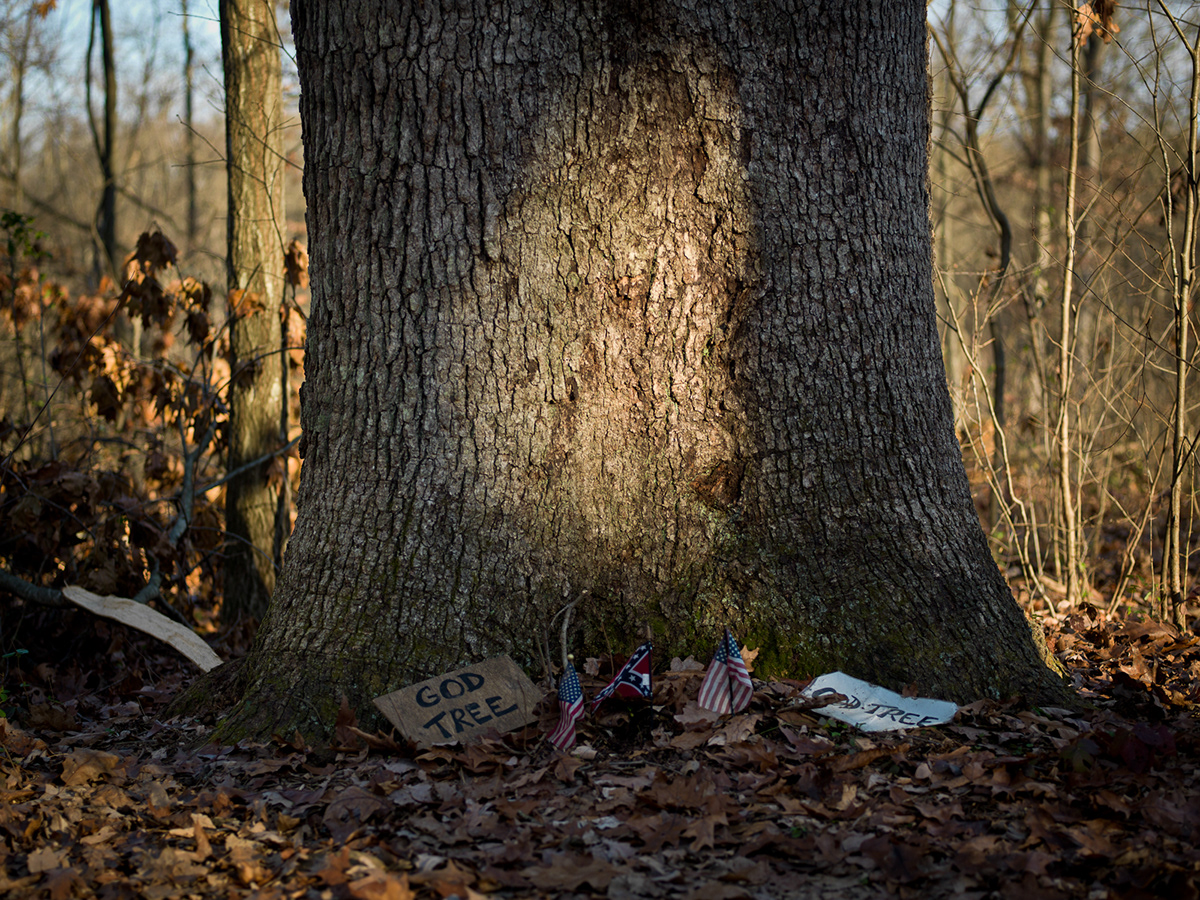
Culp's Hill White Oak, Gettysburg, Pennsylvania, 2011
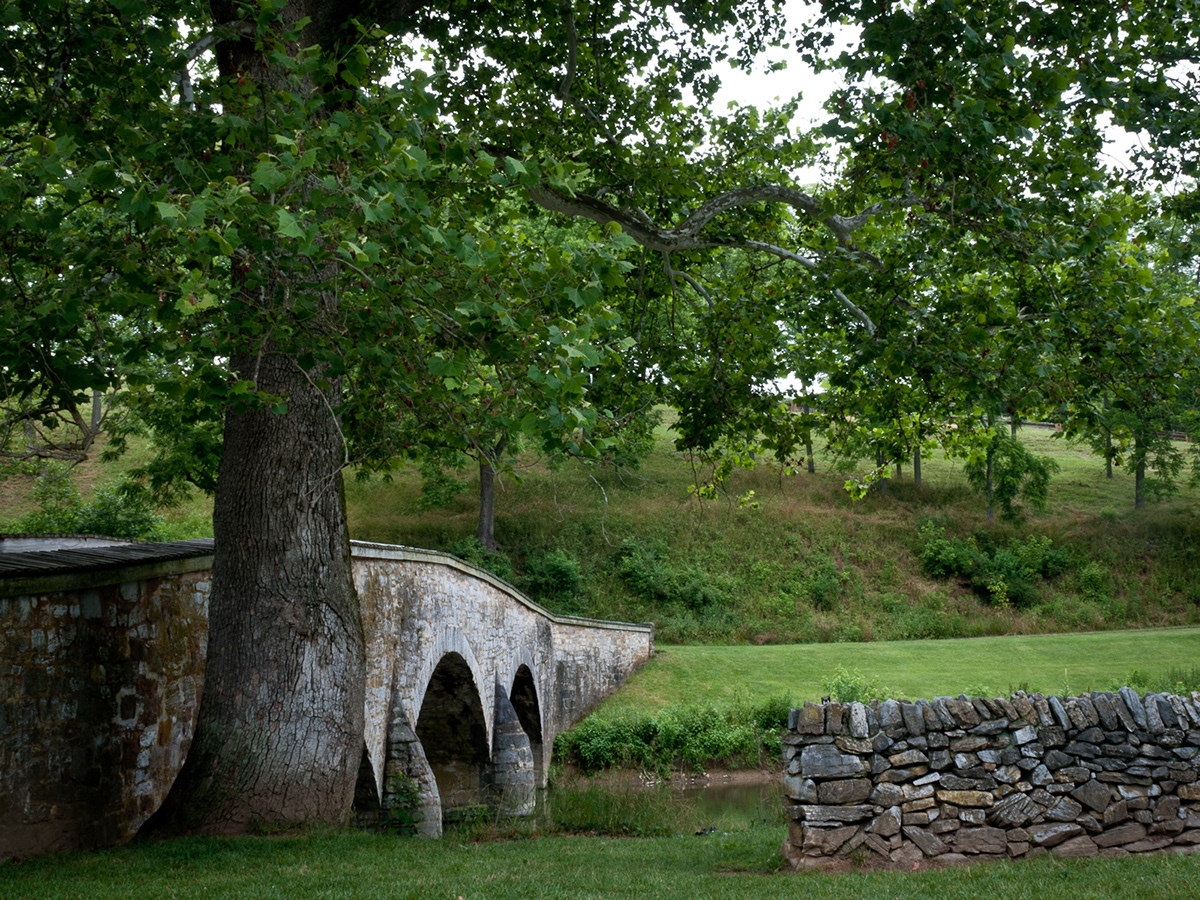
Burnside Bridge Sycamore, Sharpsburg, Maryland, 2011
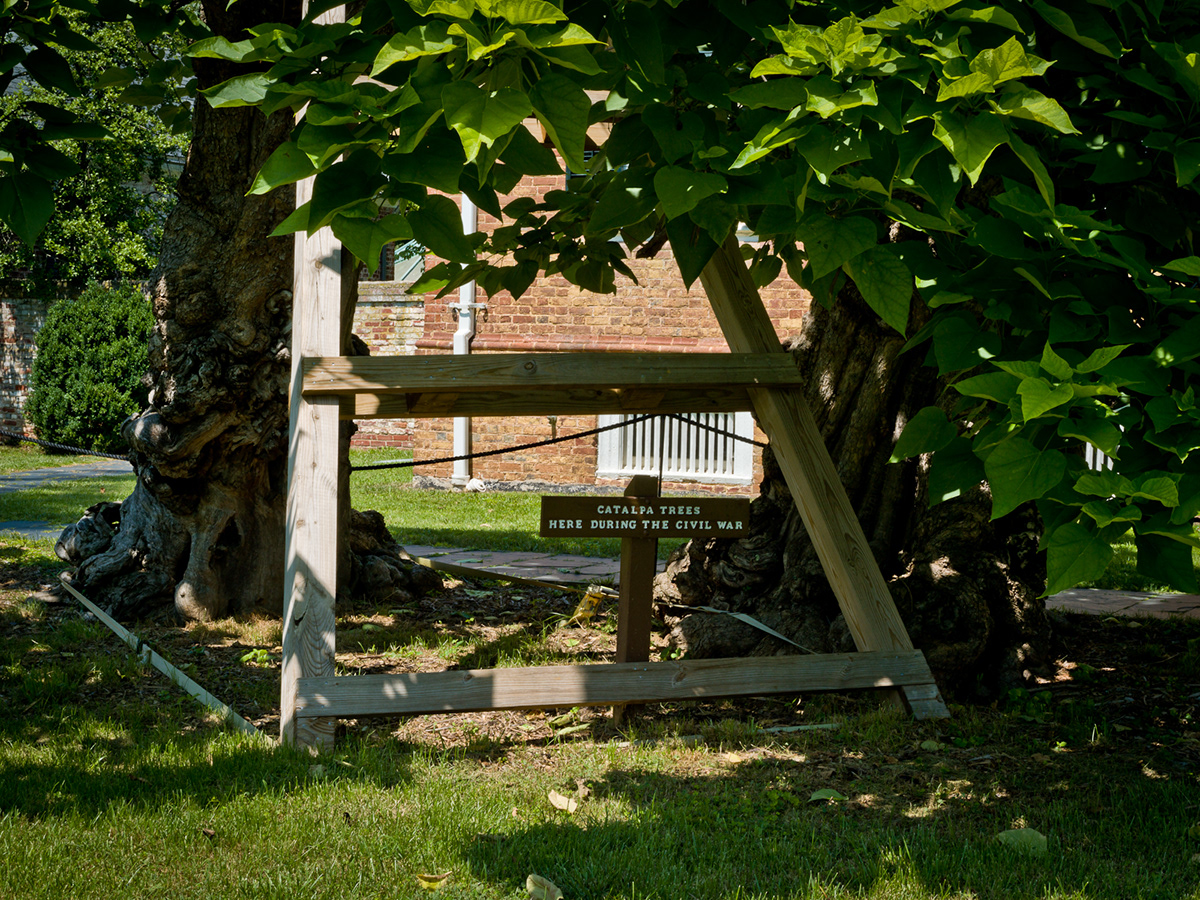
Chatham Manor Catalpa Trees, Fredericksburg, Virginia, 2011
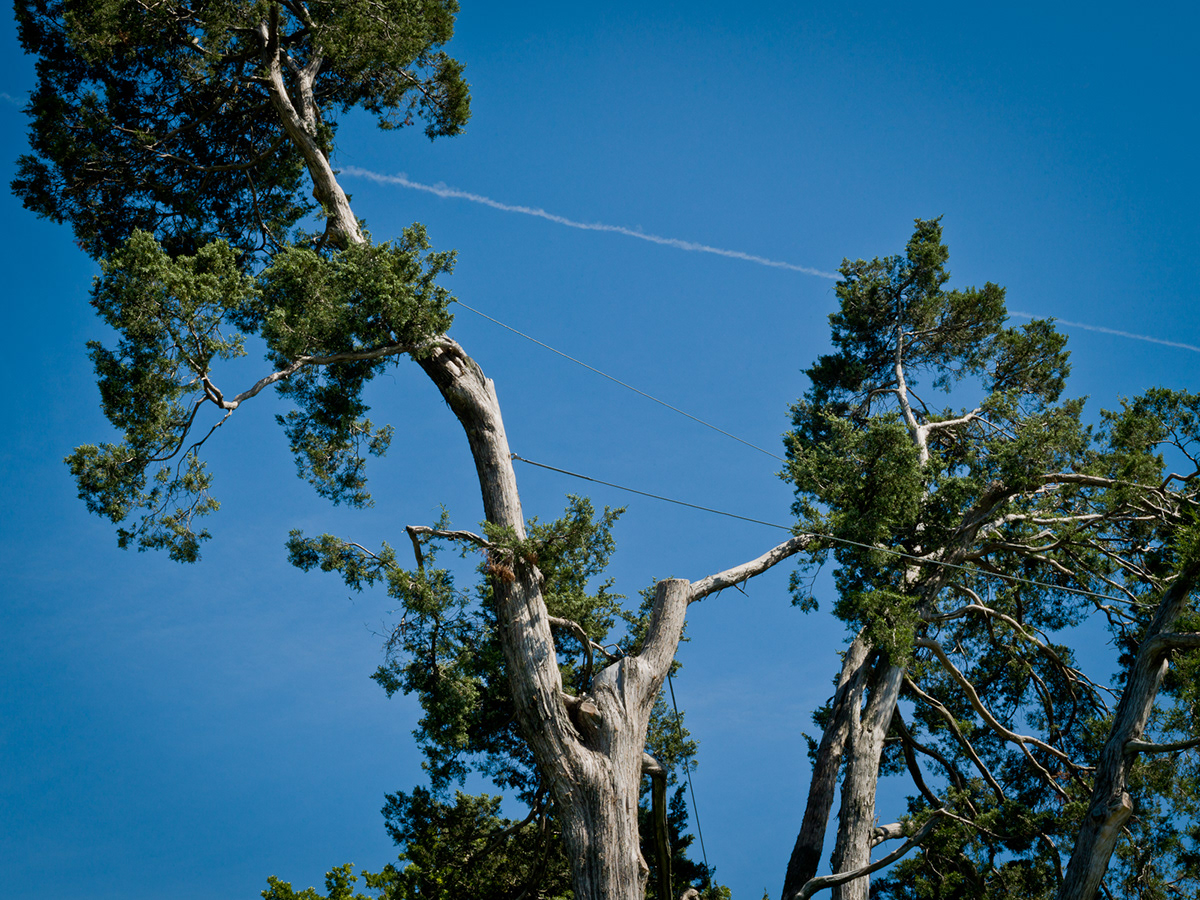
Support Cable, Cedar Tree, Manassas National Battlefield, Manassas, Virginia, 2011
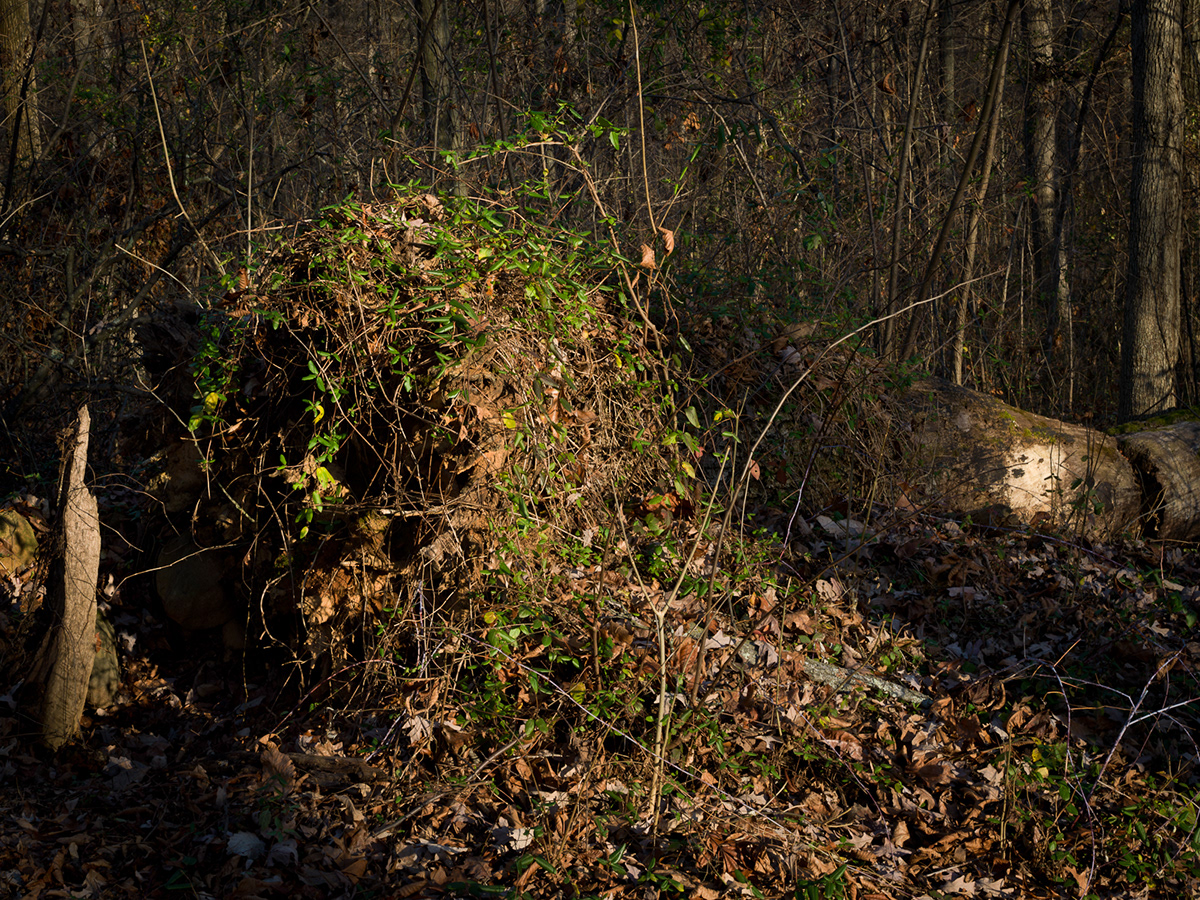
Culp's Hill Uprooted Tree, Gettysburg, Pennsylvania, 2011
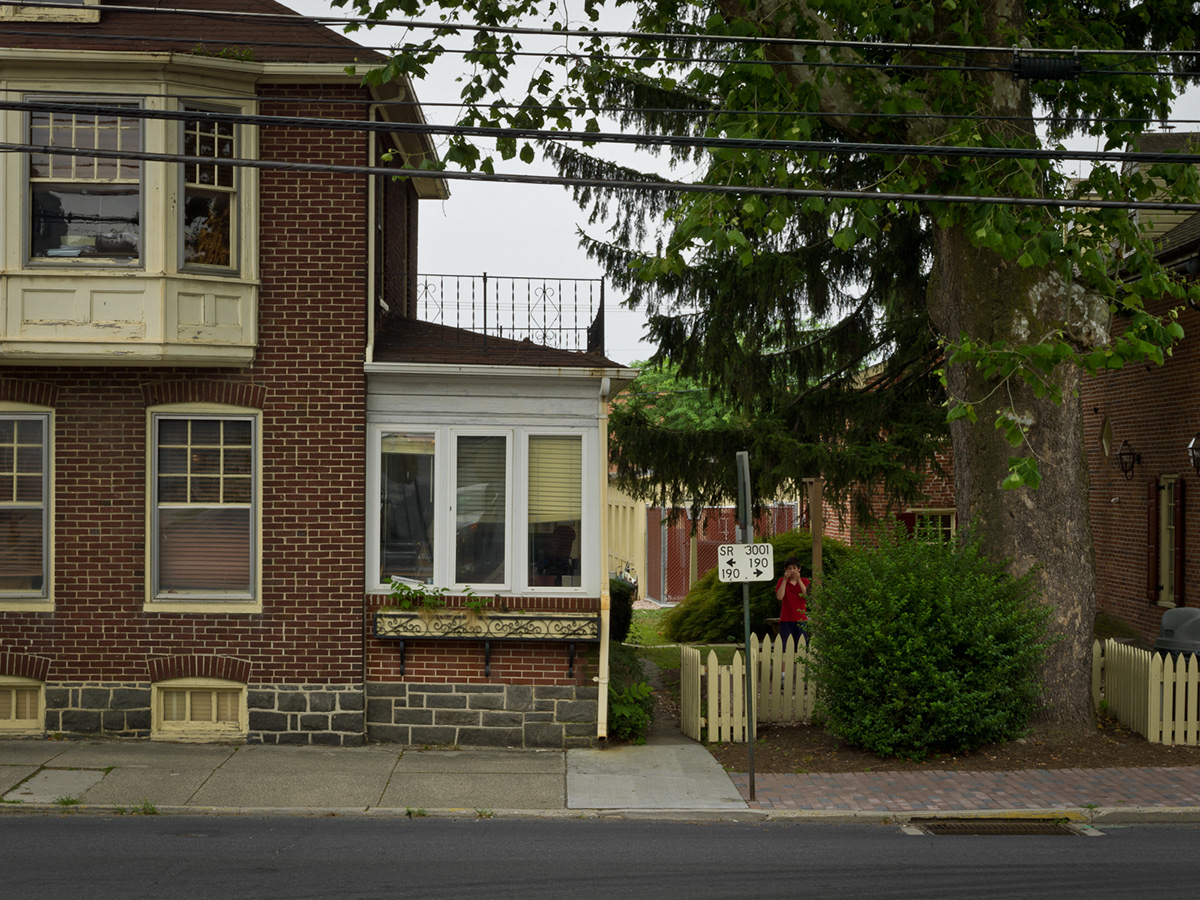
Baltimore Street Sycamores, Tree 1, Gettysburg, Pennsylvania, 2011
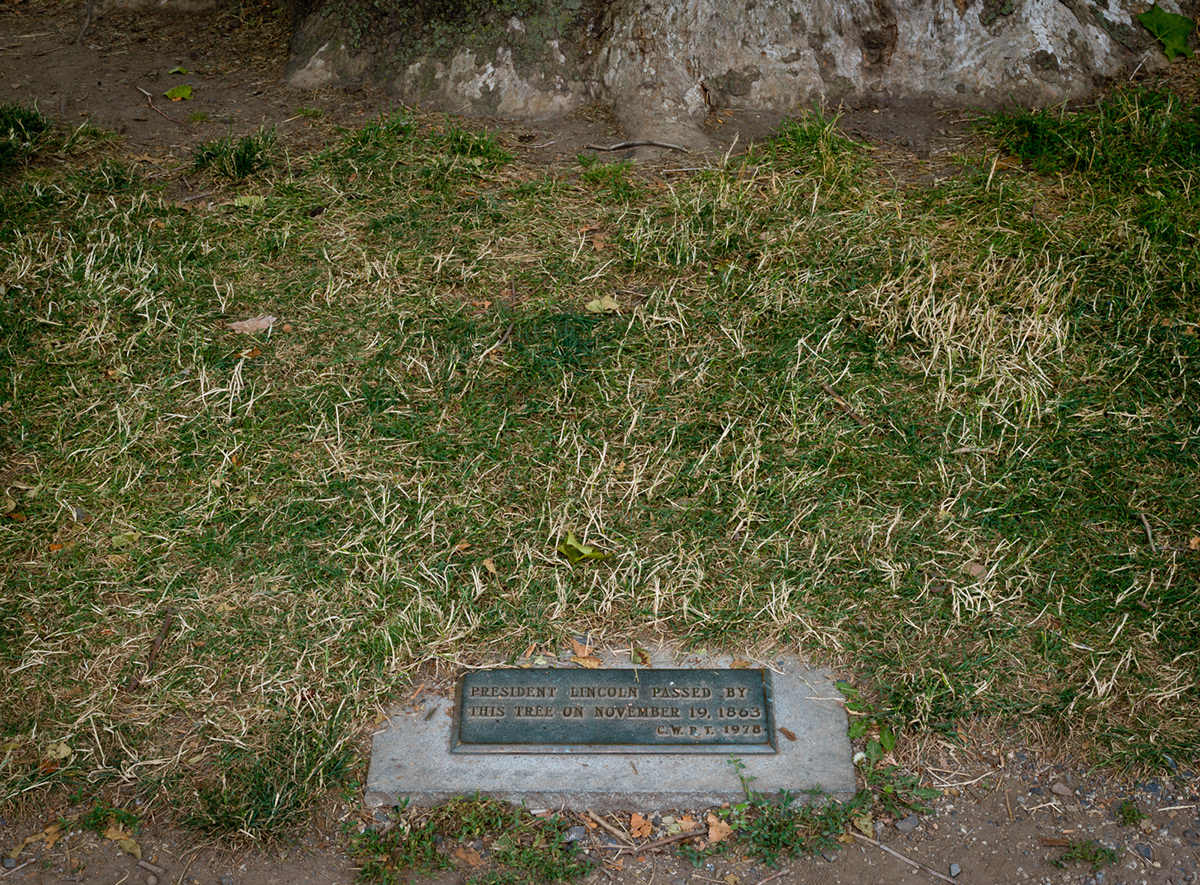
Baltimore Street Sycamores, Tree 2, Gettysburg, Pennsylvania, 2011
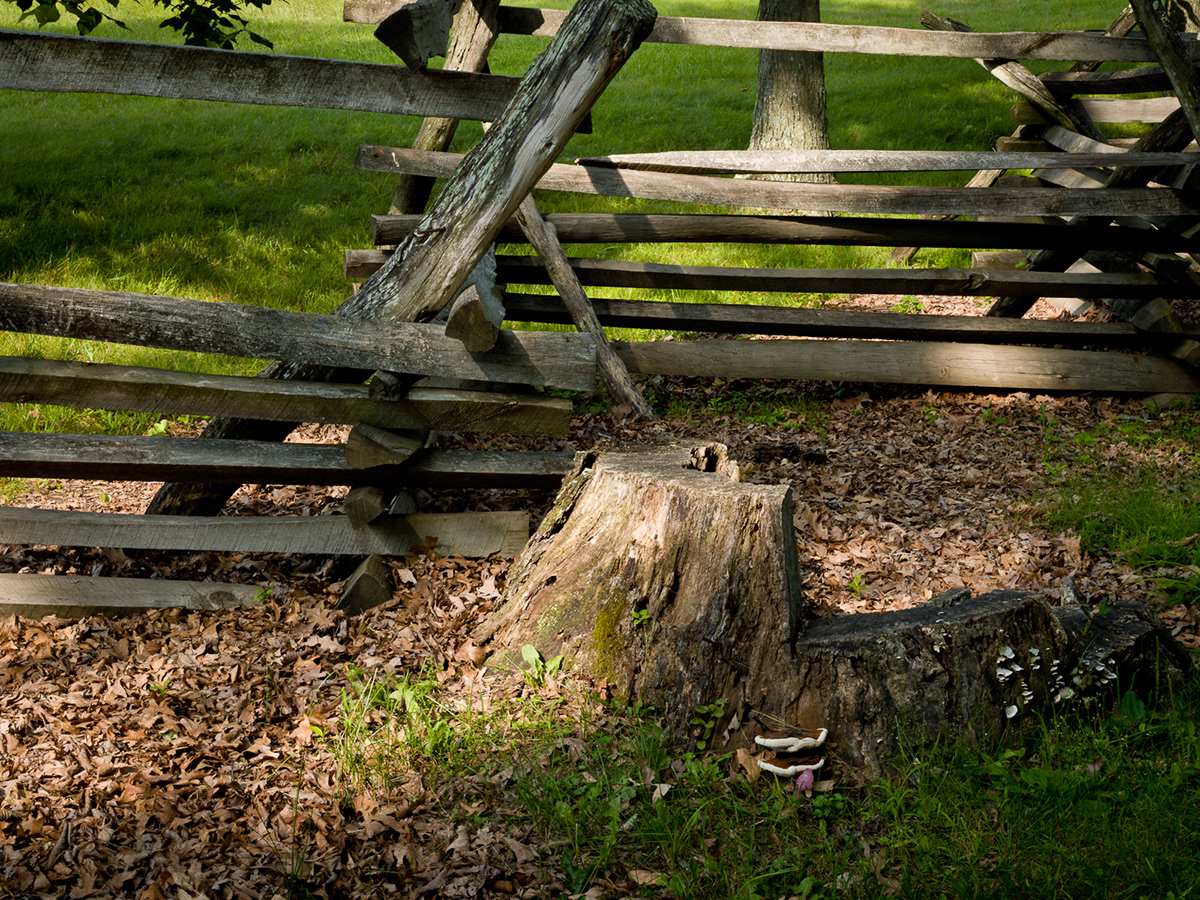
Heth Wounding Stump, Gettysburg, Pennsylvania, 2011
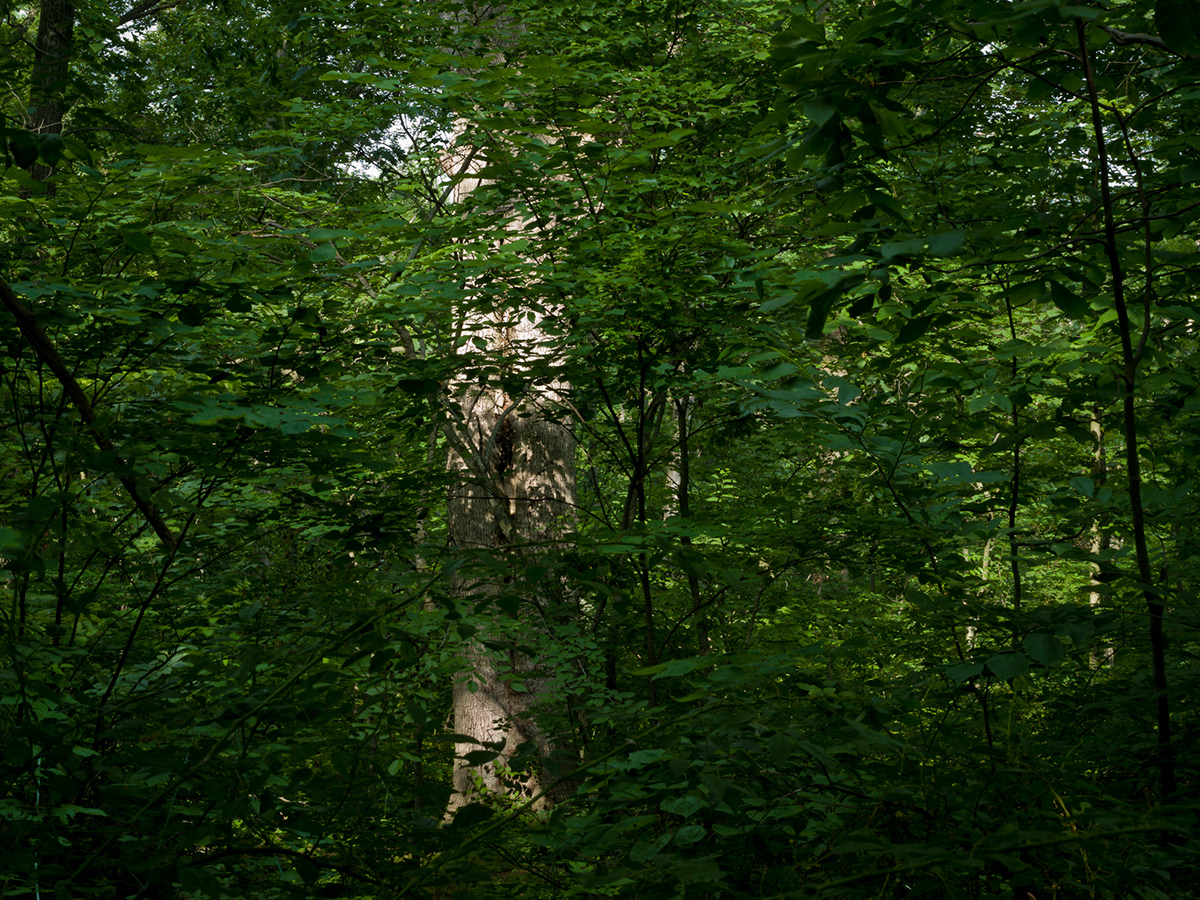
Culp's Hill White Oak, Gettysburg, Pennsylvania, 2011
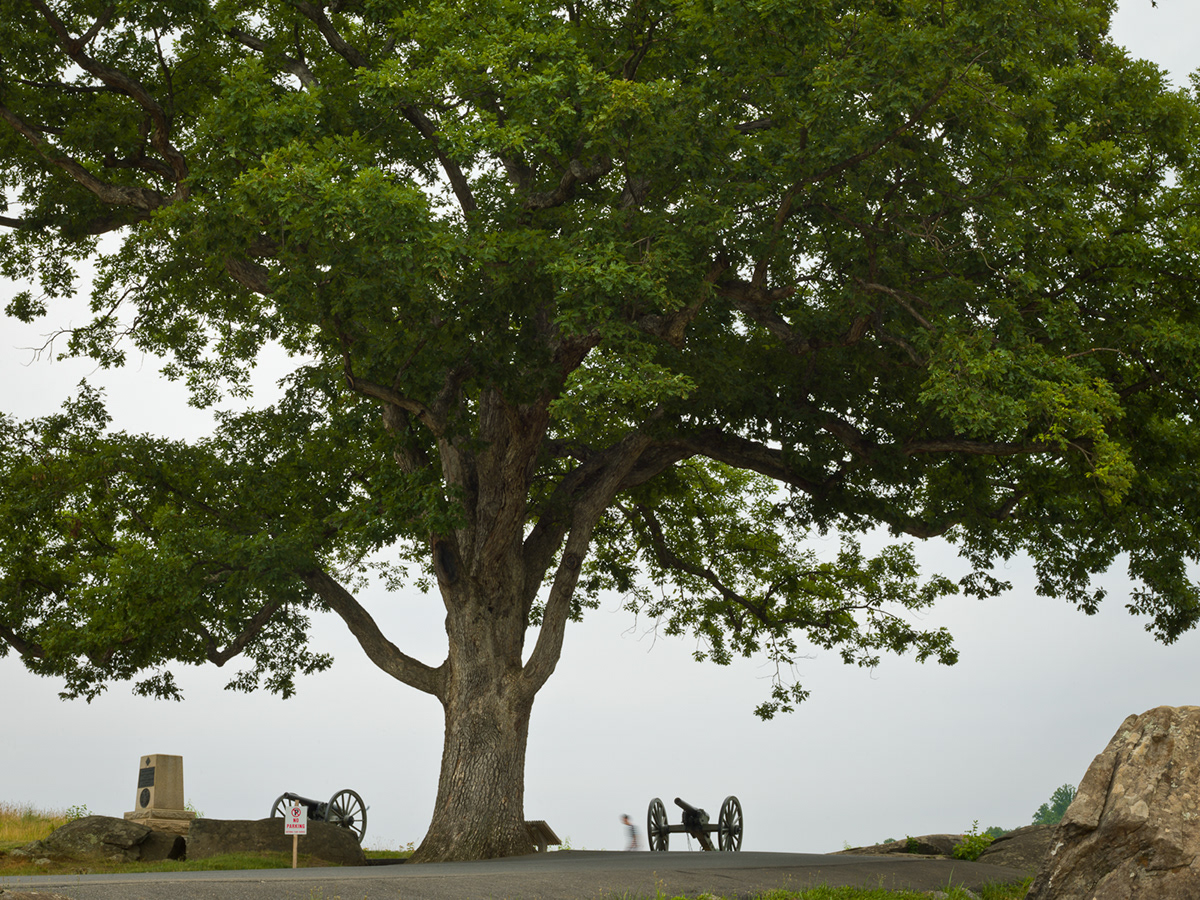
Devil's Den White Oak, Gettysburg, Pennsylvania, 2011

Gettysburg Address Honey Locust, Gettysburg, Pennsylvania, 2011
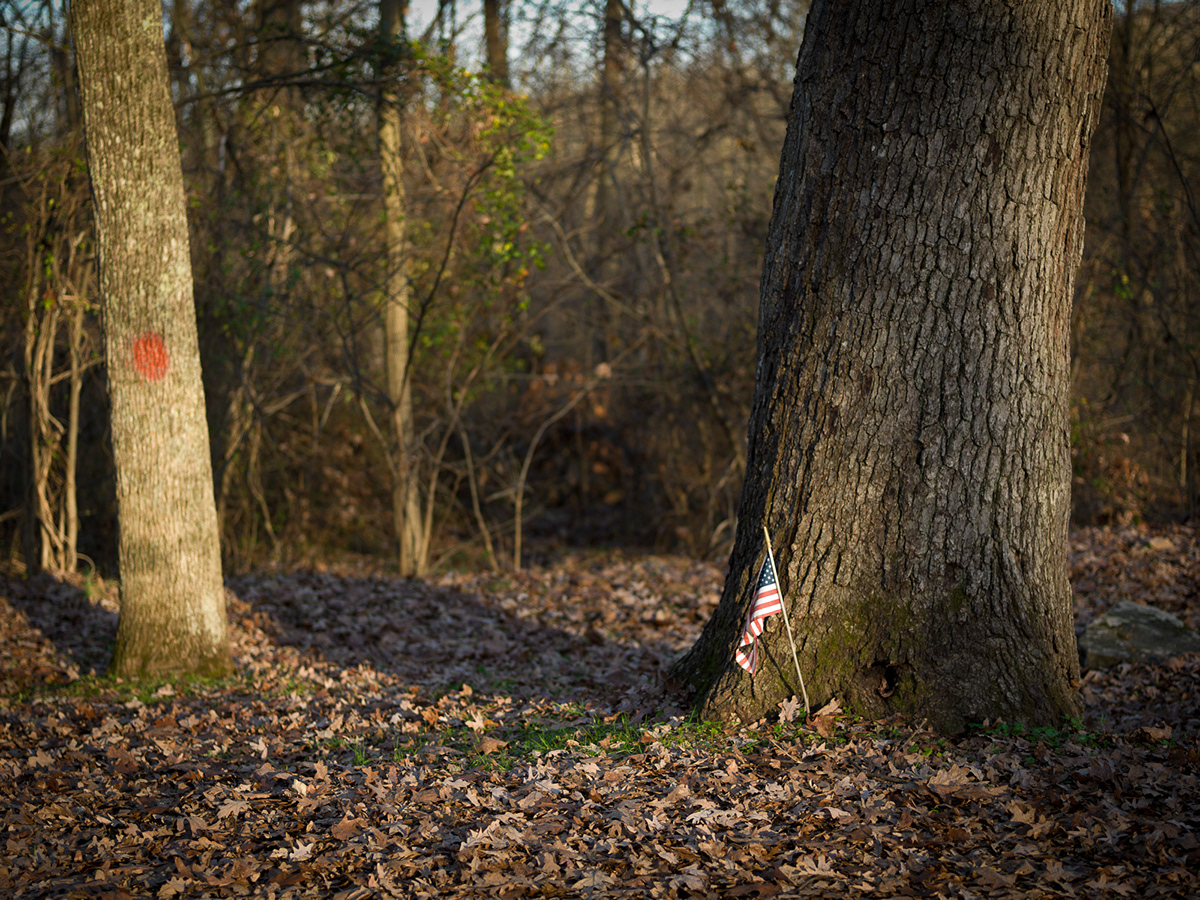
Culp's Hill Oak Tree, Gettysburg, Pennsylvania, 2011
Beganmy visits (December 21, 1862) among the camp hospitals in the Army of thePotomac, under General Burnside. Spent a good part of the day in a large brickmansion [Chatham] on the banks of the Rappahannock, immediately oppositeFredericksburg. It is used as a hospital since the battle, and seems to havereceived only the worst cases. Outdoors, at the foot of a tree, within tenyards of the front of the house [probably the still standing Catalpa tree], Inoticed a heap of amputated feet, legs, arms, hands, etc. -- about a load for aone-horse cart. Several dead bodies lie near, each covered with its brownwoolen blanket. In the dooryard, toward the river, are fresh graves, mostly ofofficers, their names on pieces of barrel staves or broken board, stuck in thedirt.
Thehouse is quite crowded, everything impromptu, no system, all bad enough, but Ihave no doubt the best that can be done; all the wounds pretty bad, somefrightful, the men in their old clothes, unclean and bloody. Some of thewounded are rebel officers, prisoners. One, a Mississippian--a captain-- hitbadly in the leg, I talked with him some time; he asked for papers, which Igave him. (I saw him three months afterward in Washington, with leg amputated, doingwell.)
Iwent through the rooms, down stairs and up. Some of the men were dying. I hadnothing to give at that night, but wrote a few letters to folks home, mothers,etc. Also talked to three or four who seemed most susceptible to it, andneeding it.
Thehouse is quite crowded, everything impromptu, no system, all bad enough, but Ihave no doubt the best that can be done; all the wounds pretty bad, somefrightful, the men in their old clothes, unclean and bloody. Some of thewounded are rebel officers, prisoners. One, a Mississippian--a captain-- hitbadly in the leg, I talked with him some time; he asked for papers, which Igave him. (I saw him three months afterward in Washington, with leg amputated, doingwell.)
Iwent through the rooms, down stairs and up. Some of the men were dying. I hadnothing to give at that night, but wrote a few letters to folks home, mothers,etc. Also talked to three or four who seemed most susceptible to it, andneeding it.
From Walt Whitman's The Wound Dresser

